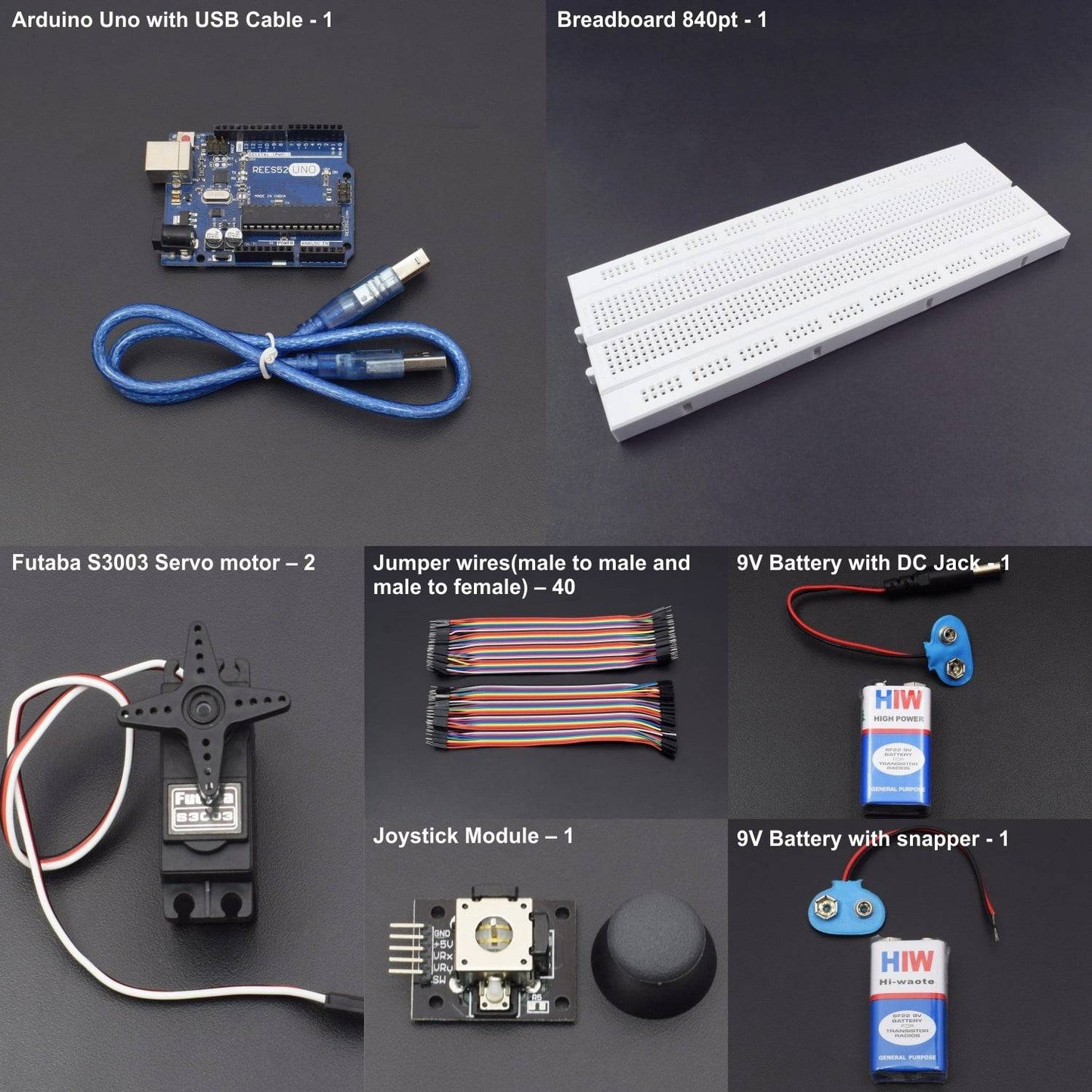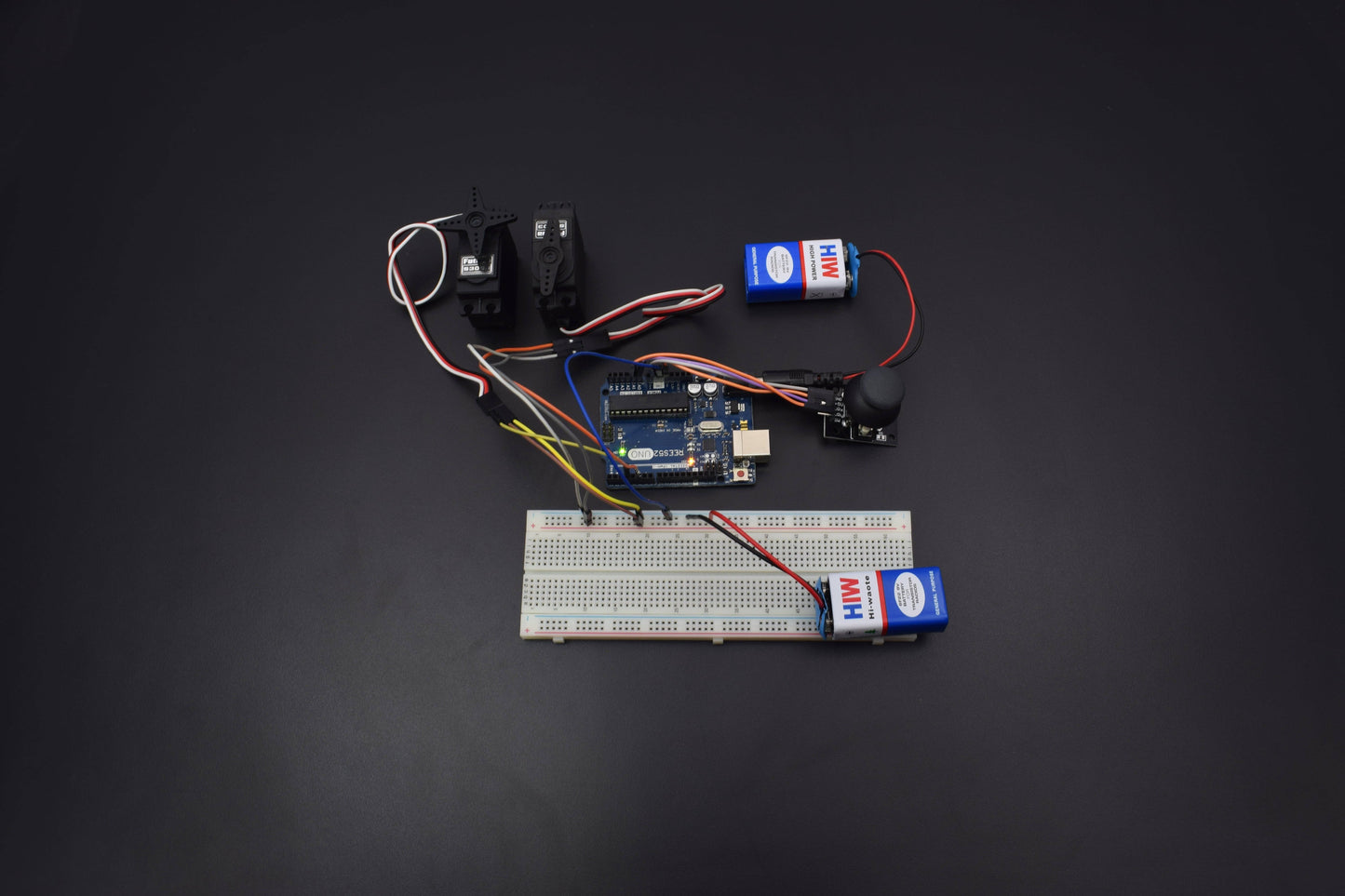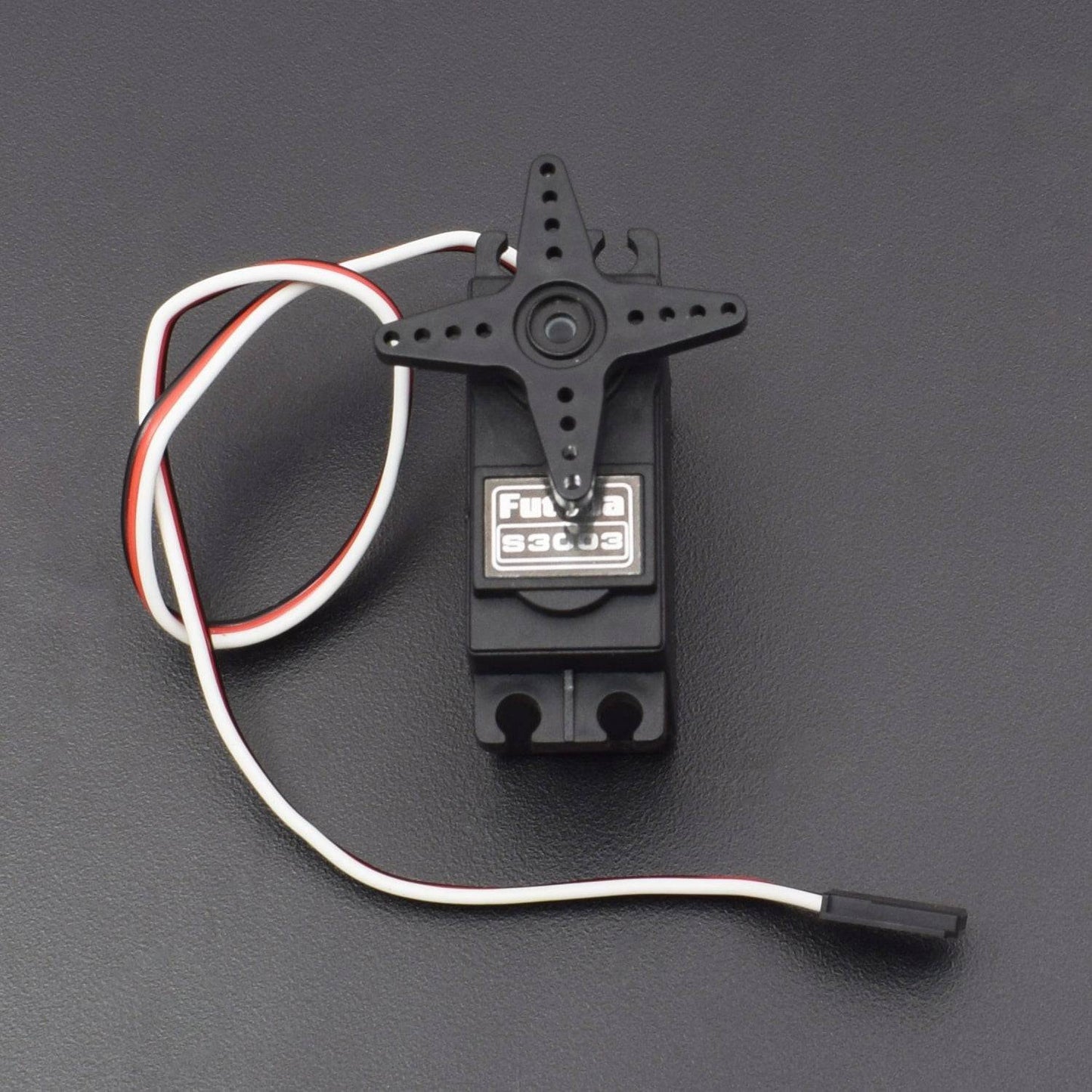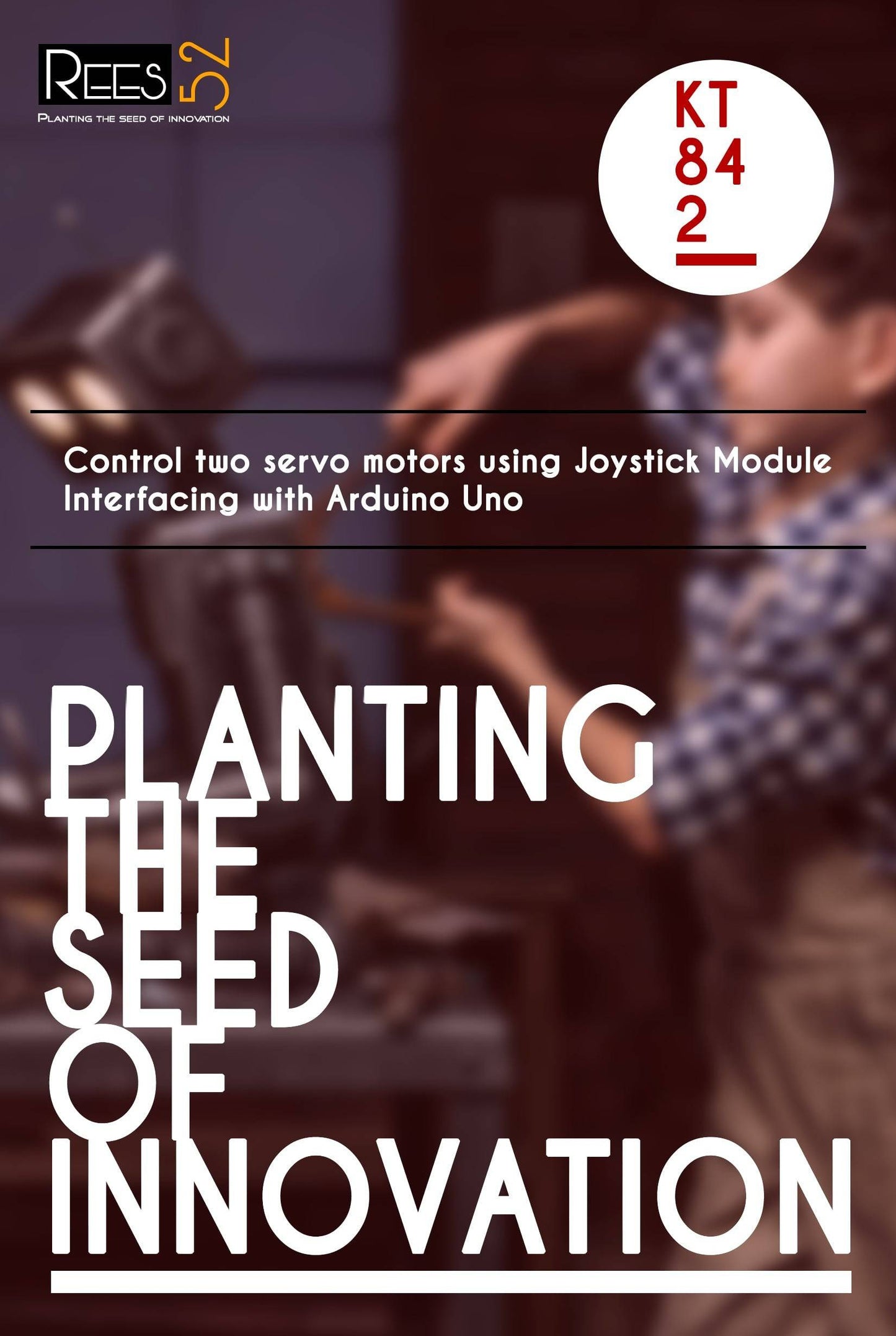



Hardware required
- Arduino Uno with USB Cable – 1
- 840 points breadboard – 1
- Jumper wires male to female – 40 pcs
- Jumper wires male to male – 40 pcs
- Futaba S3003 Servo motor – 2
- Joystick Module – 1
- 9v Battery -2
- DC Jack – 1
- snapper - 1
HARDWARE REQUIRED
- Arduino Uno with USB Cable – 1
- 840 points breadboard – 1
- Jumper wires male to female – 40 pcs
- Jumper wires male to male – 40 pcs
- Futaba S3003 Servo motor – 2
- Joystick Module – 1
- 9v Battery -2
- DC Jack – 1
- snapper - 1
SOFTWARE REQUIRED
Arduino IDE 1.8.5 (programmable platform for Arduino)
Click To Download :https://www.arduino.cc/en/Main/Software
SPECIFICATIONS
FUTABA S3003 SERVO MOTOR
- Operating Voltage: 4.8-6.0 Volts
- Operational current: 100mA
- Operating Speed (4.8V): 0.23sec/60 degrees at no load
- Operating Speed (6.0V): 0.19sec/60 degrees at no load
- Stall Torque (4.8V): 44 Oz/in. (3.2kg.cm)
- Stall Torque (6.0V): 56.8 Oz/in. (4.1kg.cm)
- Motor Type: 3 Pole Ferrite
- Operating Angle: 45 Deg. one side pulse traveling 400µsec
JOYSTICK MODULE
A joystick is an input device consisting of a stick that pivots on a base and reports its angle or direction to the device it is controlling. The Joystick Module is a tiny low cost option to add a game like control to your projects. Be it robotics or any other project that requires a precise human control. The module has two potentiometers for the X and Y axis measurements. Also a switch that can give an additional control option.
- Supply Voltage: 3.3V to 5V
- Interface: Analog x2,Digital x1
- PH2.0 Interface
- Size:35x39mm
- Weight:15g
- 3 axes: X, Y (potentiometers) and Z (button)
- Potentiometers (X and Y): 2 x 5Kohm
- Button: normally open (Z)
- Strip Connection: 2.54mm
PIN DESCRIPTION
JOYSTICK MODULE
3 axes: X, Y (potentiometers) and Z (button)

CIRCUIT DESCRIPTION
- The external battery VCC / GND connect to the breadboard.
- The Arduino GND connect to the breadboard's GND input
The servo connections we use in this project are as follows;
- Orange Input - Signal Input
- Red Input - Power Input (VCC)
- Brown Input - Ground Input(GND)
- The Servo1 VCC and GND connect to the breadboard's VCC / GND inputs
- The Servo1 Signal connect to the Arduino Digital PWM 3
- The Servo2 VCC and GND connect to the breadboard's VCC / GND inputs
- The Servo2 Signal connect to the Arduino Digital PWM 5
The joystick connections we use in this project are as follows;
- The Joystick GND connect to the Arduino GND
- The Joystick VCC connect to the Arduino VCC
- The Joystick 'X' (in some modules 'H') connects to the Arduino Analog 0
- The Joystick 'Y' (in some modules 'V') connects to the Arduino Analog 1
The Joystick 'SW' (switch or button) not connected
CODE
CLICK TO SEE THE CODE:
WORKING
- In this set up we are controlling two servo motors with the help of a joystick module.
- When we move the joystick module stick in different direction we see the rotation of the servo motors






